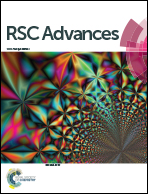Molecular dynamics study of the frictional properties of multilayer MoS2
Abstract
To reveal the friction mechanism of molybdenum disulfide (MoS2), the frictional properties of multilayer MoS2 lubrication film were studied under variable loads and shearing velocities by the molecular dynamics (MD) method. The results showed irreversible deformation of MoS2 was caused by heavy load or high shear velocity during the friction process and the interlayer velocity changed from a linear to a ladder-like distribution; thus, the number of shear surfaces and the friction coefficient decreased. The low friction coefficient caused by heavy load or high velocity could be maintained with a decrease in load or velocity. For a solid MoS2 lubrication film, the number of shearing surfaces should be reduced as much as possible and the friction pair should be run under heavy load or high shear velocity for a period of time in advance; thus, it could exhibit excellent frictional properties under other conditions. The proposed friction mechanism provided theoretical guidance for experiments to further improve the frictional properties of MoS2.



 Please wait while we load your content...
Please wait while we load your content...